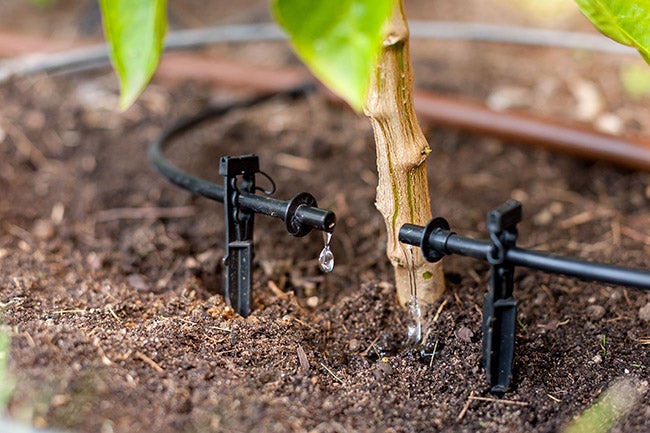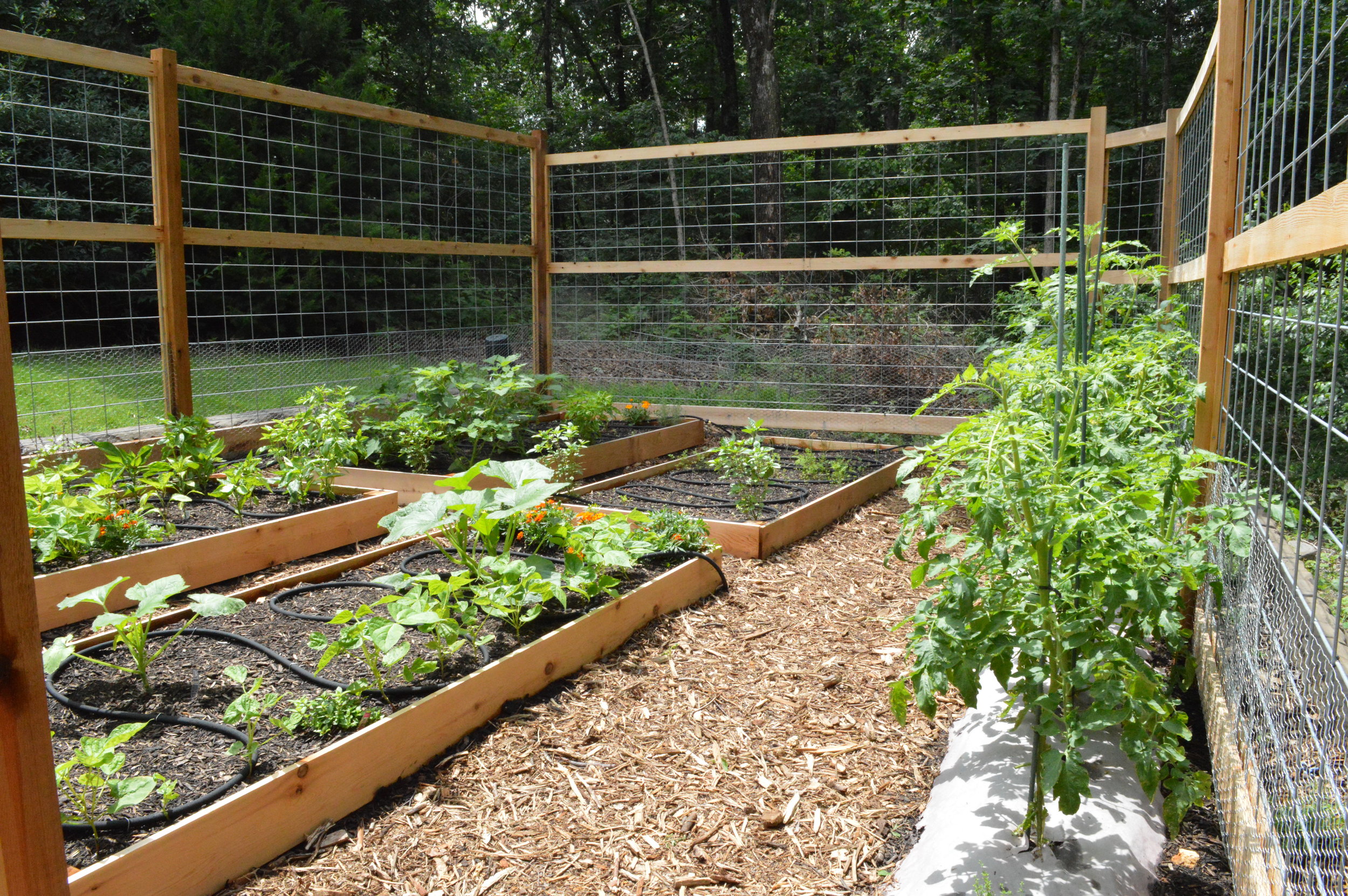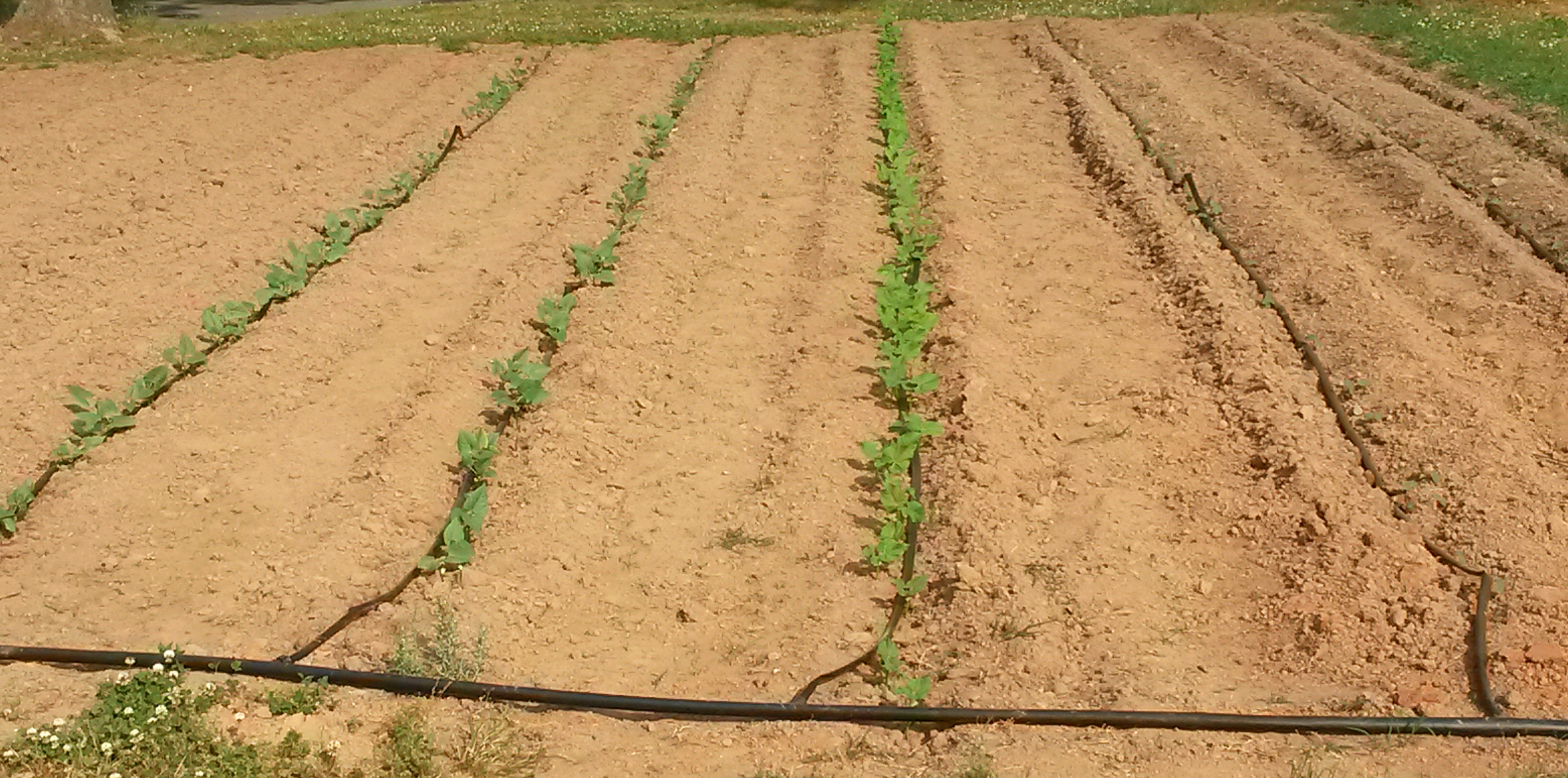As an Amazon Associate, I earn from qualifying purchases.
Drip irrigation is the best system for a vegetable garden. It ensures efficient water use and promotes healthy plant growth.
Drip irrigation delivers water directly to plant roots. It minimizes water waste and reduces the risk of disease. This system uses perforated hoses or tubes placed near the soil. It provides consistent moisture levels, essential for vegetable gardens. Drip irrigation can be easily automated, saving time and effort.
It also conserves water, making it an eco-friendly choice. The system works well in various soil types and garden sizes. Installing drip irrigation may have an initial cost, but long-term benefits outweigh it. By following this skillful method I have seen my vegetable yield increase manifold.
Choosing The Right Irrigation System
Choosing the right irrigation system for a vegetable garden is crucial. It ensures that plants get the proper amount of water. A good system saves time and effort. It also helps conserve water. With so many options available, it can be challenging to pick the best one. This guide I will help you decide which system is right for your garden.
Factors To Consider
Several factors determine the best irrigation system for a vegetable garden. Garden size is one of the first things to think about. Larger gardens may need more extensive systems. Smaller gardens might do well with simpler setups.
Soil type also plays a role. Sandy soil drains quickly, while clay soil holds water longer. This affects how frequently you need to water. Plant type is another important factor. Some vegetables need more water than others. Leafy greens, for example, require more moisture than root vegetables.
Climate is a big factor too. Hot, dry climates may need systems that provide frequent watering. Cooler, wet climates might not need as much. Water availability is another key point. If water is scarce, a system that uses water efficiently is essential.
Here are some key factors to consider:
- Garden size
- Soil type
- Plant type
- Climate
- Water availability
Budget Planning
Budget is a crucial part of choosing an irrigation system. Costs can vary widely. Basic systems are cheaper but may require more manual work. Advanced systems cost more upfront but can save time and water.
Initial cost is one aspect to consider. Simple drip systems might cost around $50. More complex setups could run into hundreds of dollars. Maintenance costs are another factor. Some systems need regular upkeep. This can add to the overall cost.
Water cost is also important. Efficient systems can save money on water bills. Energy cost might be a factor too. Some systems need electricity to run. Solar-powered options can be more cost-effective in the long run.
Here’s a simple comparison of costs:
| System Type | Initial Cost | Maintenance Cost | Water/Energy Cost |
|---|---|---|---|
| Basic Drip | $50 | Low | Low |
| Advanced Drip | $200 | Medium | Low |
| Sprinkler | $150 | Medium | Medium |
| Soaker Hose | $30 | Low | Low |
Consider all these costs before deciding. A balanced approach helps you get the best system for your garden.

Drip Irrigation
Choosing the right irrigation system is crucial for a thriving vegetable garden. Drip irrigation stands out as an efficient method. It delivers water directly to the plant roots. This ensures plants get the right amount of water.
Benefits
Drip irrigation offers numerous advantages for vegetable gardens:
- Water Efficiency: Drip systems use less water than traditional methods.
- Targeted Watering: Water goes directly to the plant roots.
- Reduced Weed Growth: Only plants get water, not weeds.
- Healthier Plants: Consistent moisture levels lead to healthier plants.
Water efficiency is a major benefit. Drip systems use up to 50% less water. This saves resources and lowers water bills. Targeted watering ensures each plant gets the right amount. This reduces water waste and promotes plant health.
Weeds often thrive when water is everywhere. Drip irrigation limits water to plant roots. This reduces weed growth and makes garden maintenance easier. Healthier plants result from consistent moisture. Plants get water slowly and steadily. This prevents stress and supports strong growth.
Installation Tips
Installing a drip irrigation system is straightforward:
- Plan Your Layout: Sketch your garden. Mark where each plant is located.
- Choose Your Equipment: Get drip lines, emitters, and connectors.
- Set Up a Timer: Automate watering with a timer for consistent schedules.
Planning the layout is the first step. Sketch your garden and note plant locations. This helps determine where to place drip lines and emitters. Choosing the right equipment is crucial. Drip lines, emitters, and connectors are essential. Make sure to get quality products for durability.
Setting up a timer automates the watering process. This ensures plants get water at the right times. Consistent schedules are key for plant health. Regular watering helps plants grow strong and healthy. By following these tips, setting up a drip system becomes easy and effective.
Soaker Hoses
Choosing the right irrigation system for your vegetable garden is crucial. It ensures that your plants receive the right amount of water. One popular option is soaker hoses. Soaker hoses are known for their efficiency and simplicity. They deliver water directly to the roots of your plants. This blog post explores how soaker hoses work and their best uses.
How They Work
Soaker hoses are made from porous material. This material allows water to seep through slowly. The water is then delivered directly to the soil. This process helps to keep the soil moist but not waterlogged.
Here is how they work step-by-step:
- Lay the hose on the soil surface or just below it.
- Connect the hose to a water source.
- Turn on the water supply. Water will start to seep out slowly.
- The water will spread evenly across the garden area.
Watering with soaker hoses has several benefits:
- Water conservation: Uses less water compared to sprinklers.
- Root-level watering: Delivers water directly to the roots.
- Reduced evaporation: Less water is lost to the air.
Soaker hoses are also easy to install. They can be arranged to fit any garden layout. This makes them a versatile choice for gardeners.
Best Uses
Soaker hoses are ideal for several garden situations. They work well in both large and small gardens. Their design makes them perfect for vegetable gardens. They ensure that plants get consistent moisture.
Here are some best uses:
- Row gardening: Perfect for watering plants arranged in rows.
- Raised beds: Easily fit into the layout of raised garden beds.
- Mulched gardens: Work well under mulch to reduce evaporation.
- Container gardening: Can be adapted for use in large containers.
Soaker hoses are also great for water-sensitive plants. Plants like tomatoes, peppers, and beans benefit from this system. The gentle watering method prevents soil erosion. It also reduces the risk of fungal diseases.
In summary, soaker hoses are a versatile and efficient choice. They are perfect for vegetable gardens. They provide consistent and gentle watering. This makes them a top choice for gardeners.
Sprinkler Systems
Choosing the right irrigation system for a vegetable garden is essential. A good system ensures your plants get the right amount of water. Sprinkler systems are a popular choice for many gardeners. They can water large areas evenly.
Types Of Sprinklers
Sprinklers come in many forms. Each type has its own benefits. Here are some common types:
- Oscillating Sprinklers: These move back and forth. They cover rectangular areas well.
- Rotary Sprinklers: These spin in a circle. They are great for circular areas.
- Stationary Sprinklers: These don’t move. They are best for small, specific areas.
- Traveling Sprinklers: These move on wheels. They can cover large, irregular shapes.
Each type has a unique way of watering. It’s important to pick the right one for your garden’s needs. Oscillating sprinklers are great for even, rectangular plots. Rotary sprinklers work well for circular beds or lawns. Stationary sprinklers are perfect for small spaces. Traveling sprinklers can handle large, odd-shaped areas.
Consider the size and shape of your garden. Also, think about the type of plants you have. Different plants might need different types of sprinklers. Choosing the right type will help your garden thrive.
Ideal Conditions
Sprinkler systems work best under certain conditions. Here are some factors to consider:
- Water Pressure: Sprinklers need good water pressure. Low pressure can cause uneven watering.
- Weather Conditions: Wind can affect sprinkler efficiency. Calm days are best for watering.
- Soil Type: Sandy soil drains quickly. Clay soil holds water longer.
- Plant Type: Different plants have different water needs. Leafy greens need more water than root vegetables.
Water pressure plays a crucial role. Make sure your system can handle the pressure required. Weather also affects how well sprinklers work. Wind can blow water away from your plants. Soil type is another key factor. Sandy soil needs more frequent watering. Clay soil might need less frequent but deeper watering.
Finally, consider the plants in your garden. Some plants need more water than others. Plan your watering schedule based on your plants’ needs. This ensures your garden gets the right amount of water. A well-planned sprinkler system will keep your vegetable garden healthy and productive.
Rainwater Harvesting
Watering a vegetable garden effectively can be challenging. Choosing the right irrigation system is key. One of the best solutions is rainwater harvesting. This method collects and stores rainwater for later use. It’s eco-friendly and cost-effective.
Setup Process
Setting up a rainwater harvesting system involves several steps. First, you need a catchment area. This is usually your roof. Install gutters to direct the water to a storage tank.
Here are the basic steps:
- Choose a catchment area.
- Install gutters and downspouts.
- Set up a storage tank or barrel.
- Add a filter to keep debris out.
- Connect a hose or irrigation system to the tank.
Important tips: Make sure the gutters are clean. Ensure the storage tank is covered to prevent algae growth. Position the tank close to the garden to make watering easier.
| Item | Purpose |
|---|---|
| Gutters | Collect rainwater |
| Downspouts | Direct water to the tank |
| Storage tank | Store collected water |
| Filter | Keep debris out |
| Hose | Water the garden |
Water Quality
Water quality is crucial for a healthy vegetable garden. Rainwater is generally clean and free from chemicals. Yet, some precautions are necessary.
- Filter the water to remove debris and dirt.
- Avoid using water from the first rainfall after a long dry spell. It can contain pollutants.
- Regularly clean the storage tank to prevent algae and bacteria growth.
Testing the water quality ensures your plants get the best care. Use a simple water testing kit. It checks for pH levels and contaminants. A balanced pH level is essential for plant growth. Aim for a pH between 6.0 and 7.0.
- Install a fine mesh filter in the gutter.
- Use a first flush diverter to discard the first few gallons of rainwater.
- Clean the storage tank every six months.
- Test the water quality quarterly.
Following these steps ensures your vegetable garden thrives. Rainwater harvesting can be an excellent choice for your irrigation needs. It provides clean, chemical-free water for your plants.

Automatic Timers
Choosing the best irrigation system for a vegetable garden can be tricky. Automatic timers make it easier to manage watering schedules. They help to ensure your garden gets the right amount of water.
Convenience Factors
Automatic timers provide many benefits. They save time and reduce the guesswork of watering. Here are some key convenience factors:
- Consistency: Timers ensure plants get water at regular intervals.
- Efficiency: Watering happens even when you’re not home.
- Customization: You can set different schedules for different plant needs.
Using a timer helps avoid overwatering or underwatering. This is crucial for healthy plant growth. It also helps conserve water. Timers can be set to water during cooler parts of the day. This reduces water evaporation.
Timers can be easily adjusted. If the weather changes, you can change the schedule. This flexibility is a big advantage. Many timers are also compatible with rain sensors. This means watering stops during rain, saving even more water.
Best Options
Several types of automatic timers are available. Here are some of the best options:
| Type | Features |
|---|---|
| Mechanical Timers | Simple to use, no batteries needed, manually set time. |
| Digital Timers | Precise, multiple settings, battery-operated, often have screens. |
| Smart Timers | Connect to Wi-Fi, controlled via app, weather-based adjustments. |
Mechanical timers are basic but reliable. Digital timers offer more precise control. Smart timers provide the most advanced features. They can adapt to weather changes automatically. This can be very helpful for busy gardeners.
Consider your garden’s needs and your own preferences. This will help you choose the best timer for your vegetable garden. Remember, the right timer can make gardening much easier and more enjoyable.
Seasonal Considerations
Choosing the best irrigation system for a vegetable garden depends on various factors. Seasonal considerations are crucial to ensure healthy growth. Different seasons have unique needs for plants. Summer and winter, in particular, require specific attention to keep the garden thriving.
Summer Needs
Summertime brings heat and high temperatures. Vegetable gardens need more water during this season. An effective irrigation system is essential for proper hydration.
- Drip Irrigation: Delivers water directly to the roots. Reduces water waste and evaporation.
- Soaker Hoses: Releases water slowly. Ideal for maintaining soil moisture.
- Sprinkler Systems: Covers larger areas. Best for gardens with diverse plants.
Drip irrigation is highly efficient. It uses less water and targets the root zone. This prevents waterlogging and soil erosion. Soaker hoses are also effective. They provide a slow, steady supply of water. This keeps the soil consistently moist. Sprinkler systems, on the other hand, are suitable for larger gardens. They can water various plants at once.
Monitoring the garden during summer is vital. Check for signs of under or over-watering. Adjust the irrigation schedule as needed. Using a timer can help automate watering. This ensures plants get enough water even when you are busy.
Winter Preparations
Winter brings cold and frost. Preparing the garden for this season is important. Proper irrigation can protect plants from freezing temperatures.
- Insulated Hoses: Prevents water from freezing. Ensures water supply during cold months.
- Mulching: Keeps soil warm. Retains moisture and protects roots.
- Manual Watering: Allows control over water usage. Helps in avoiding over-watering.
Insulated hoses are useful in winter. They keep the water flowing even in freezing temperatures. Mulching is another essential step. It helps retain soil moisture and insulates plant roots. This protection is crucial for plant survival during cold months.
Manual watering can be more effective in winter. It allows you to control the amount of water used. This prevents waterlogging and root rot. Observing weather conditions can guide when to water. Avoid watering when the temperature drops too low.
Covering plants with frost blankets can offer additional protection. This helps in shielding plants from extreme cold and frost. Regularly checking the irrigation system ensures it functions well. This keeps the garden prepared for winter challenges.

Frequently Asked Questions
What Is The Best Irrigation System For Vegetables?
The best irrigation system for vegetables is drip irrigation. It delivers water directly to plant roots. This conserves water and reduces weed growth. It also minimizes fungal diseases.
How Does A Drip Irrigation System Work?
Drip irrigation works by slowly releasing water directly to the plant roots. It uses a network of tubes and emitters. This ensures efficient water usage and healthier plants.
Why Choose Drip Irrigation For A Vegetable Garden?
Drip irrigation conserves water by delivering it directly to roots. It reduces weed growth and minimizes fungal diseases. It’s efficient and promotes healthy plant growth.
Are Sprinkler Systems Good For Vegetable Gardens?
Sprinkler systems are less efficient than drip irrigation for vegetable gardens. They can cause water wastage and increase the risk of fungal diseases. However, they are easier to install.
Conclusion
Selecting the best irrigation system for your vegetable garden ensures healthy growth and optimal yields. Drip irrigation, sprinkler systems, and soaker hoses each offer unique benefits. Consider your garden’s size, water needs, and budget. With the right choice, your garden will thrive, providing fresh vegetables throughout the growing season.

